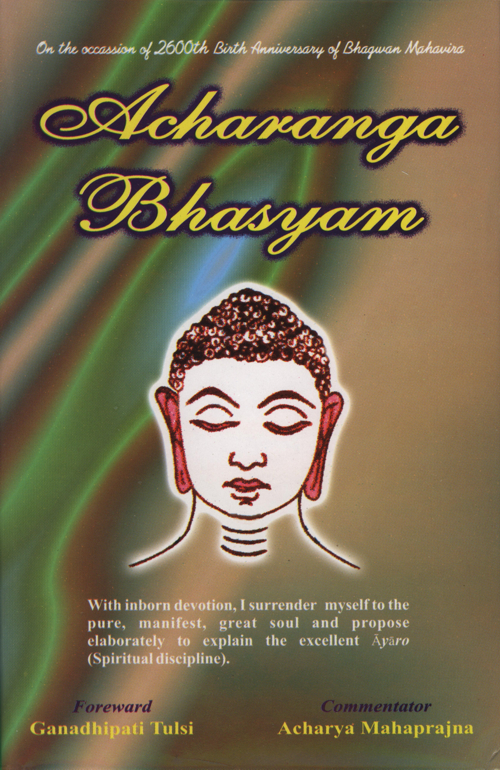8.125 jassa ṇaṃ bhikkhussa evaṃ bhavati—se gilāmi ca khalu ahaṃ imaṃsi samaṃe imaṃ sarīragaṃ aṇupuvveṇa parivahittae, se āṇupuvveṇaṃ āhāraṃ saṃvaṭṭejjā, āṇupuvveṇaṃ āhāraṃ saṃvaṭṭettā, kasāe payaṇue kiccā, samāhiacce phalagāvayaṭṭhī, uṭṭhāya bhikkhū abhinivvuḍacce.
To the monk it may occur - 'I am sick. At this time I am not able to maintain my body to follow my timely duties'. Such monk should gradually reduce his food. By gradually reducing his food, he reduces his passions. By reducing his passions, he should establish himself in the state of ecstacy and reduce both his body and passions like the plank of wood chiselled on both sides. Thus reduced, the monk should prepare for tranquil death and make his body calm and quiet.
8.126 aṇupavisittā gamaṃ vā, ṇagaraṃ vā, kheḍaṃ vā, kabbaḍaṃ vā, maḍaṃbaṃ vā, paṭṭaṇaṃ vā, doṇamuhaṃ vā, āgaraṃ vā, āsamaṃ vā, saṇṇivesaṃ vā, ṇigamaṃ vā, rāyahāṇiṃ vā, taṇāiṃ jāejjā, taṇāiṃ jāettā, se tamāyāe egaṃtamavakkamejjā, egaṃtamavakkamettā appamḍe apa-pāṇe appa-bīe appa-harie appose appidae apputtiṃga-paṇaga-dagamaṭṭiya-makkḍāsaṃtāṇae, paḍil-ehiya-paḍilehiya, pamajjiya-pamajjiya taṇāiṃ saṃtharejjā, taṇāiṃ saṃtharettā ettha vi saṃmae kāyaṃ ca, jogaṃ ca, iriyaṃ ca, paccakkhāejjā.
The monk preparing for attrition, if he is physically Tit, for begging straw, he should enter village, town, village sorrounded by earthen wall, a small habitation, isolated habitation, port, habitation accessible by land and water, village near mine, hermitage, caravan centre, business centre, or the capital. Having begged for straw, he should retire with it to a secluded spot. After having repeatedly examined and cleaned the ground where there are no eggs, nor living beings, nor seeds, nor sprouts, nor dew, nor water, nor anthills, nor mildew, nor mud, nor cobwebs, he should spread the straw on it. Then starting fast unto death, he should abandon his body, give up all activities and movements.
Bhāṣyaṃ Sūtra 126
Previously (in sūtra 106), the process of fasting unto death accompanied with movement has been explained. Now the process of fasting unto death (without movement) is being explained. The monk, having entered any place such as a village and asked for straw and having retired to a lonely place, cleans the spot and spreads the straw there. Here the tradition of the Cūrṇi is - he bows down to adorable and emancipated ones, after laying on the straw bed. He now renews the five great vows and starts practising fasting unto death (without movement) - he gives up the four kinds of the food. He abandons his bodily movement - if he is seated, he does so sitting; if laying down, he remains laying down. He stops the activity - he does not contract or extend his body. He concentrates his mind and stops his speech. He abandons movement - he does not indulge in going to and fro. This is the process of fasting unto death (without movement).
8.127 taṃ saccaṃ saccāvādī oe tiṇṇe chiṇṇa-kahaṃkahe ātītaṭṭhe aṇātīte veccāṇa bheūraṃ kāyaṃ, saṃvihūṇiya virūvarūve parisahovasagge assiṃ vissaṃ bhaittā bheravamaṇuciṇṇe.
Such fasting is righteous. The monk true to his resolve, dispassionate, crossing the samsāra, free from doubt, of fully accomplished mission, is unaffected by external influences. Knowing the transient nature of body, conquering all kinds of hardships and troubles, he contemplates on separateness of the soul from the body. He is not perturbed while undertaking formidable task of fasting.
Bhāṣyaṃ Sūtra 127
See Sūtra 107.
8.128 tatthāvi tassa kālapariyāe.
Such death is also timely and unblameworthy.
8.129 se tattha viaṃtikārae.
By such death, the monk can also put an end to his worldly existence.
8.130 iccetaṃ vemohāyaiaṇaṃ hiyaṃ, suhaṃ, khamaṃ, ṇisseyasaṃ, āṇugāmiyaṃ. - tti bemi.
Such death is the proper ground for elimination of the delusion about death. It is good, auspicious, blissful, appropriate, beneficial and conducive to enlightment. - Thus do I say.
Bhāṣyaṃ Sūtras 128-130
It is obvious.
 Acharya Mahaprajna
Acharya Mahaprajna

